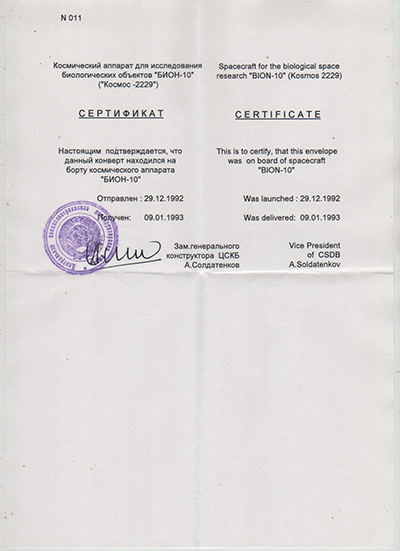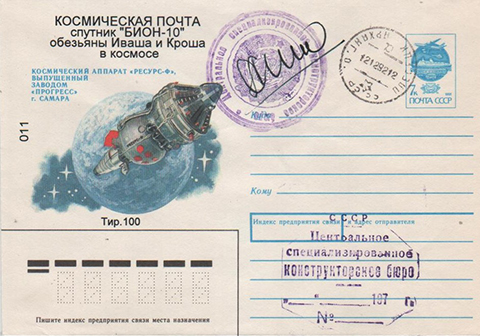Space Cover 689: Bion-10Thirty years ago an international programme led by IBMP (Institute of BioMedical Problems) in Moscow took place with international participation.
BION-10, formerly Kosmos 2229, that generic Soviet programme that served for everything, was developed by several participants: Russia, several ESA countries (Austria, France, Germany and Netherlands) and other countries as Canada, China, Czecholosvaquia, Lithuania, Ukraine, USA and Uzbekistan.
Soyuz-U rocket was launched from Plesetsk cosmodrome on Dec 29, 1992 and after 11,6 days in Earth orbit, capsule BION-10 landed safely on plains of Kazakhstan on Jan 10, 1993.
BION-10 capsule carried many different biological experiments: two rhesus monkeys (named Krosh and Ivasha), newts, frog eggs and tadpoles, fruit flies, desert beetles, silk moth caterpillars, plants, seeds, seedlings, algae, and mammalian cell and tissue cultures.
However, the most important for astrophilatelic collectors is that BION-10 also carried covers to space as pictured above.
Postal stationaries, issued in 1991 depicting a Resurs-F satellite, were postmarked at Plesetsk on Dec 12, 1992 when they were packed and delivered to engineers to be placed inside the capsule BION-10. All exemplars bear a round violet and an octagonal violet seal. Additionally, were overprinted in black with text referring BION-10, vertically numbered and quoting total edition (only 100 units).
Each postal stationary was accompanied with its correspondent and numbered certificate signed by A. Soldatenkov, vice-president of CSDB (Central Specialised Design Bureau).

Finally, as a curiosity, Krosh and Ivasha survived to Earth return.













